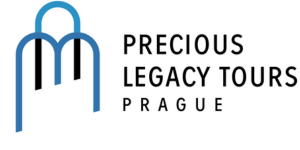Product detailed description
It was established by Dr. Salomon Hugo Lieben in 1906 in the midst of what used to be for centuries the famous ancient Jewish Town of Prague, which at the turn of the 19th and 20th centuries was reconstructed into a modern Prague district – as the Jews got civil rights and could move out. This led to the initiative of documenting the vanishing character of the old quarter, and the Museum being established in the first place.
But its activities were interrupted by the Nazi occupation of Czechoslovakia in autumn 1939, and its collection was taken over by the Prague Jewish community. Later on, the Nazis confiscated the property of the Jewish communities, and Prague Jewish community officials managed to have the collection stored in Prague’s synagogues and this led to its preservation. In order to save both the collection and confiscated property such as liturgical objects, books and archival documents, based on Karel Stein’s initiative, the so-called Central Jewish Museum was founded in 1942 and it served this purpose until the end of World War II. However, the newly established institution could by no means be considered to be a museum in today's sense of the word. It was not open to the general public and it basically consisted of dozens of warehouses where its workers, by orders of the Nazis, sorted, evaluated and registered the confiscated Jewish property. One of the reasons why the Nazis allowed these activities might have been that from their point of view, this was a much more efficient way to gain knowledge about confiscated Jewish objects than sorting the objects themselves since they had no experts to do such specialized work. The Main Curator of the Museum Josef Polak and his colleagues realized that in the midst of the Nazi rampage, with regular transports of Jewish people being sent from Prague to the Terezín ghetto since November 1941, they had to preserve the sizable records of Jewish culture in Bohemia and Moravia for future generations of Jews. Thanks to their effort, the work of the Jewish Museum maintained its high professional level even in the harsh conditions of the Protectorate of Bohemia and Moravia, and it has been the basis of its work and activities till now.
After World War II, the museum, including its extensive collections, was confiscated by the Communist regime in 1948. Its further operation was affected by the ideological pressure of the regime. Members of the Jewish community were oppressed, harassed and targeted very bluntly and systematically by the regime and its secret police throughout the Communist period. This also influenced the possibilities of the museum staff carrying out independent professional and scientific activities.
The Velvet Revolution in 1989, which led to the downfall of the Communist regime in Czechoslovakia, had a profound impact not just on the Czechoslovak society as a whole, as it restored democracy and other civil liberties, but it affected the local Jewish community especially greatly, as it was no longer subjected to the pressure and oppression of the regime. The Jewish community — in 1989, a fragment of what it once used to be — could now freely start to reconstruct itself. Within that reconstruction, the Jewish Museum of Prague played a very central role.
After being successfully restituted by the Czech Jewish community in 1994, it yet again started to engage in serious, scientific Jewish and Hebrew studies, which naturally involved paying attention to local Bohemian and Moravian Jewish history. Also, during that time, the Museum buildings were given back to the Jewish community, and the Federation of Jewish Communities took back from the State the greater part of the Museum’s collections. The Jewish Museum originated as a non-state institution, and at this time, it launched a new chapter of its more than a 100-year existence by becoming a non-State institution once again.
HIGHLIGHTS:
✓ Professional guide at your disposal in English
✓ Meeting point: Café Golem - Maiselova street 15, Prague 1

Be the first who will post an article to this item!


















